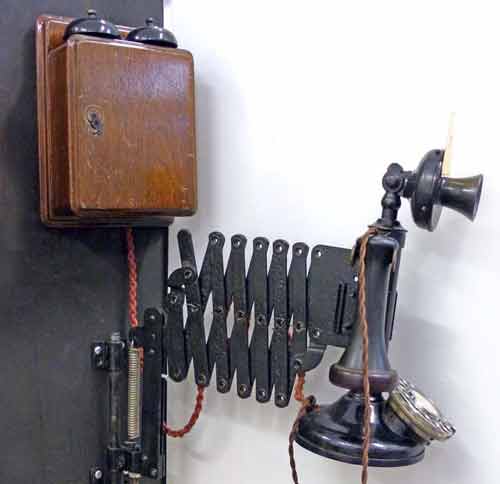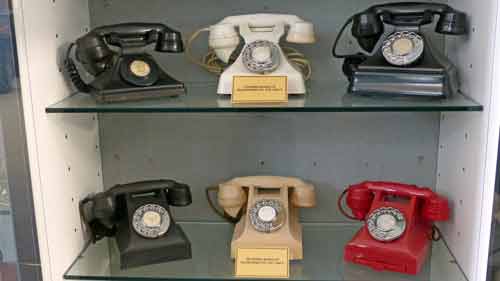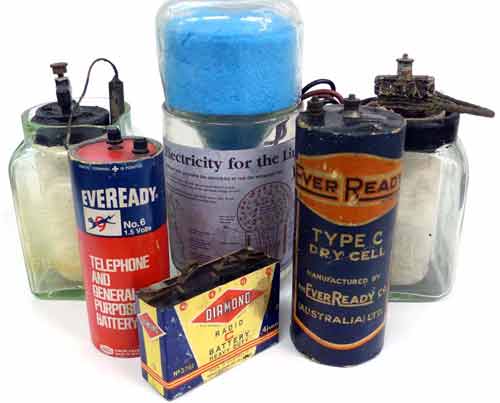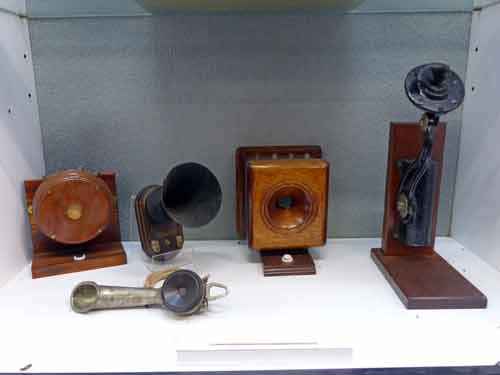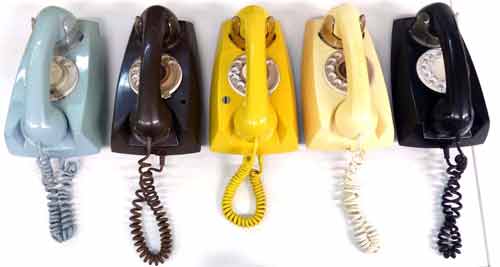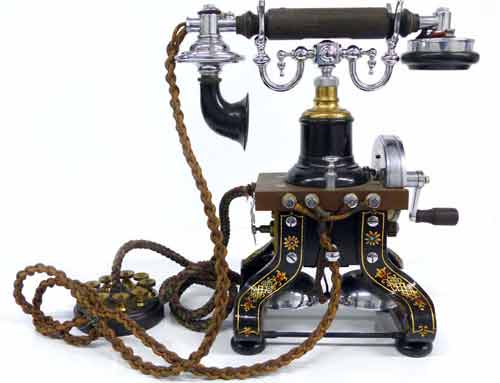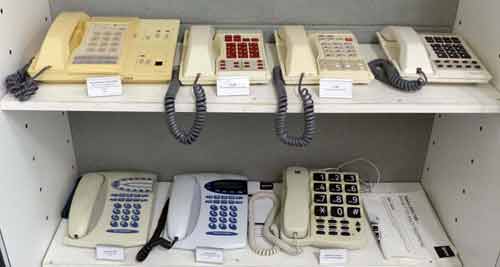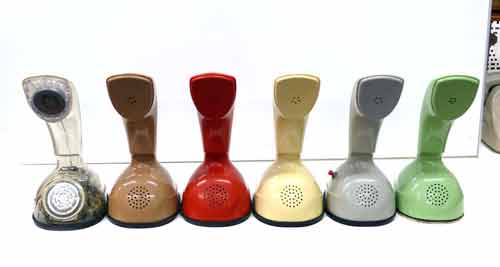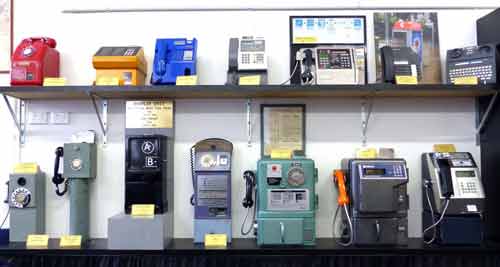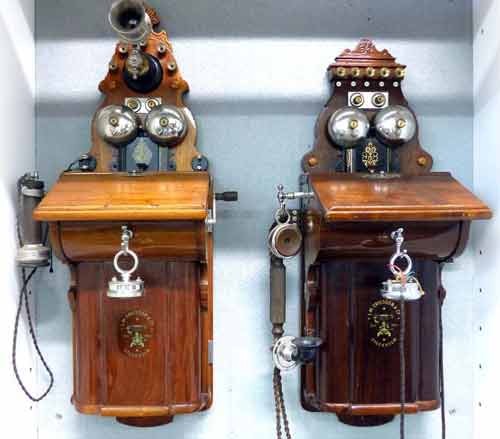Holiday Hours
The Museum is open on Wednesdays and most Saturdays unless there are special events (Christmas, Easter, elections). It is always best to check by calling 1800 Museum (1800 687 386) or by making an online booking, after which you will be contacted.

A selection of early batteries used in telegraph and telephone circuits

Replica of Bells original practical telephone receiver 1887. Also used as a transmitter

The First Mobile Phone of the late 1970s. Weight of 15KG
This unit measured 35cm W x 15cm D x 32cm H

Very early table handset hones of British/U.S.A and Swedish origin.
Note the magnets in the legs for the signalling magneto.

Public Telephones

Ericofon Telephones 1970s

Coloured wall phones with rotary or push button dialing. Now using plastic cases

A selection of 1930s vintage table handsets with bakelite cases
The Morse code telegraph had been in use for over 30 years and spread virtually world wide by the time Alexander Graham Bell made his first successful voice transmission in 1876.
The first telephones were rather crude. There was just one device at each end of the line. It was held in front of the mouth when speaking and held to the ear to hear the reply. Later somebody got the idea of a second instrument, one for the mouth and one for the ear. At this stage however, there were no telephone exchanges. Some of the earlier experiments temporarily used telegraph lines, but it was discovered there was a limit to just how far a voice would travel. These first telephones were simply operated between two points. Australia's first phone exchange was in Melbourne in 1880, and other States quickly followed..
Field Telephones
A collection of World War 2 field Telephones and other apparatus.
Phonophore
This 'Phonophore' was a curious device which allowed telephone contact over an existing telegraph circuit.
Pedestal Phones
Pedestal telephone, wall mounted on a "scissors" extender. Used in some very busy offices such as newspaper publishers.
Vintage Handsets
A collection of 1930's vintage table handsets with “Bakelite” cases.
Batteries
A selection of very early batteries used in telegraph and telephone circuits.
Bells Practical Telephone
Replica of Bells original practical telephone receiver 1887. Also used as a transmitter.
Wall Phones
Coloured Wall phones with rotary dials. Now using plastic cases.
Early Handset
Very early handset phone made by LM Ericsson, Sweden. Named the Eiffel Tower or Skeleton telephone due to all parts being exposed. Note the magnets on the legs for signalling magneto.
Mobile Phone
At a massive 15Kg! no camera included. The first of the mobile phone revolution, late 1970’s. This unit measured 35cm W x 15cm D x 32cm H.
' Gibson Girl '
Gibson Girl was the affectionate name given to an emergency radio transmitter used during the 2nd World War to enable downed airmen to send distress signals on 500kc, an International distress frequency at the time.
Modern Handset
Modern Handset Telephones. These are a selection of telephones that were issued with a telephone plan of the day, unlike today when one must purchase their own handset.
Swedish Ericsson Ericofons
Swedish Ericsson “Ericofons”. The rotary dial is in the base. This was a novelty phone and was popular for many years.
Public Telephones
A range of Automatic Public Telephones, (coin operated). Some on the top row are leased multi-coin phones used in hotels, motels etc. and some are special assist phones.
Original Swedish Ericsson wall-phones
Original Swedish Ericsson wall-phones. Signalling the exchange was by turning the handle on the right. Power for the transmitter was supplied by two large dry cells housed in the lower body.
Whilst the earpiece was apparently little changed from earliest times to recent times, a lot of experimenting took place to develop the microphone.



















